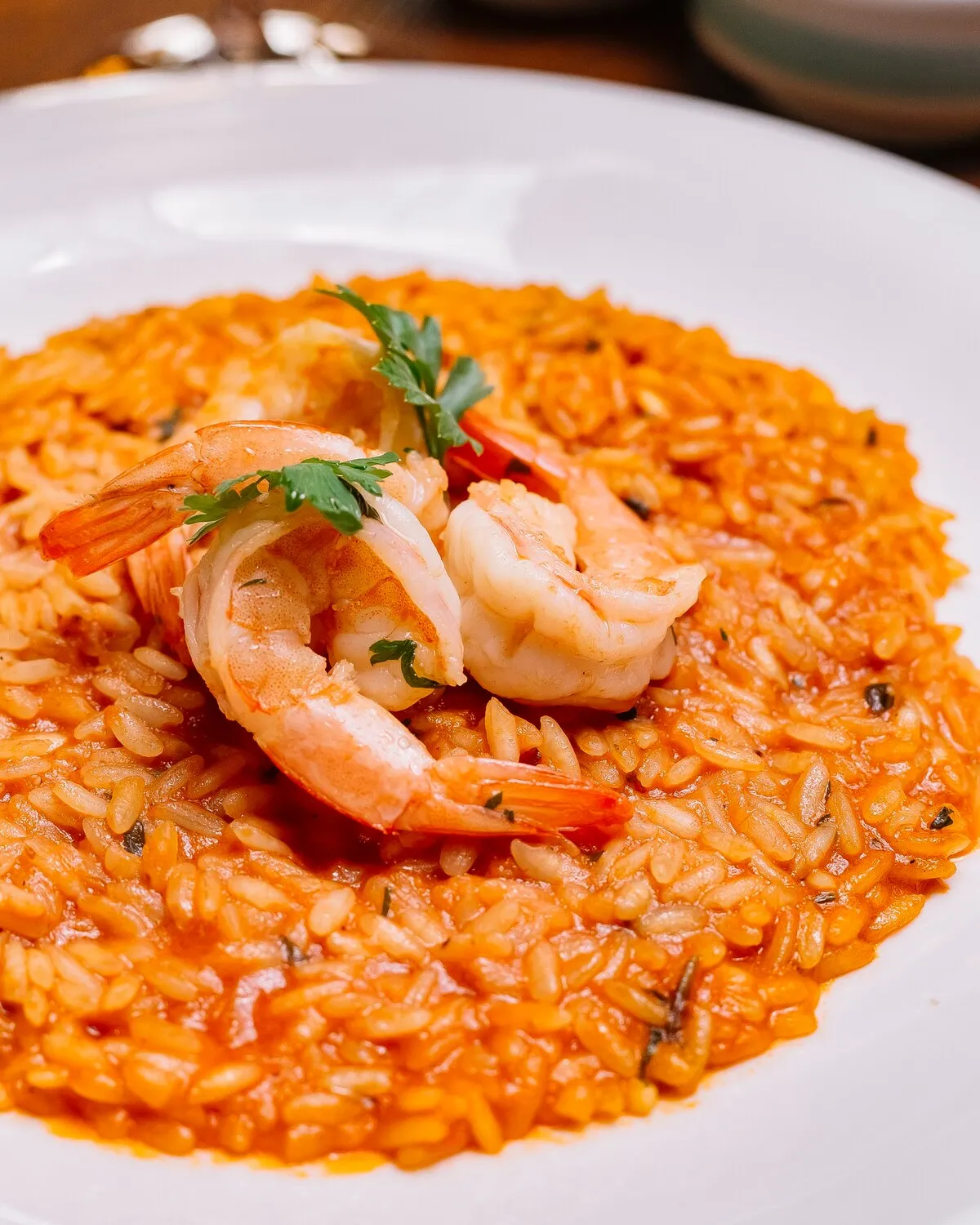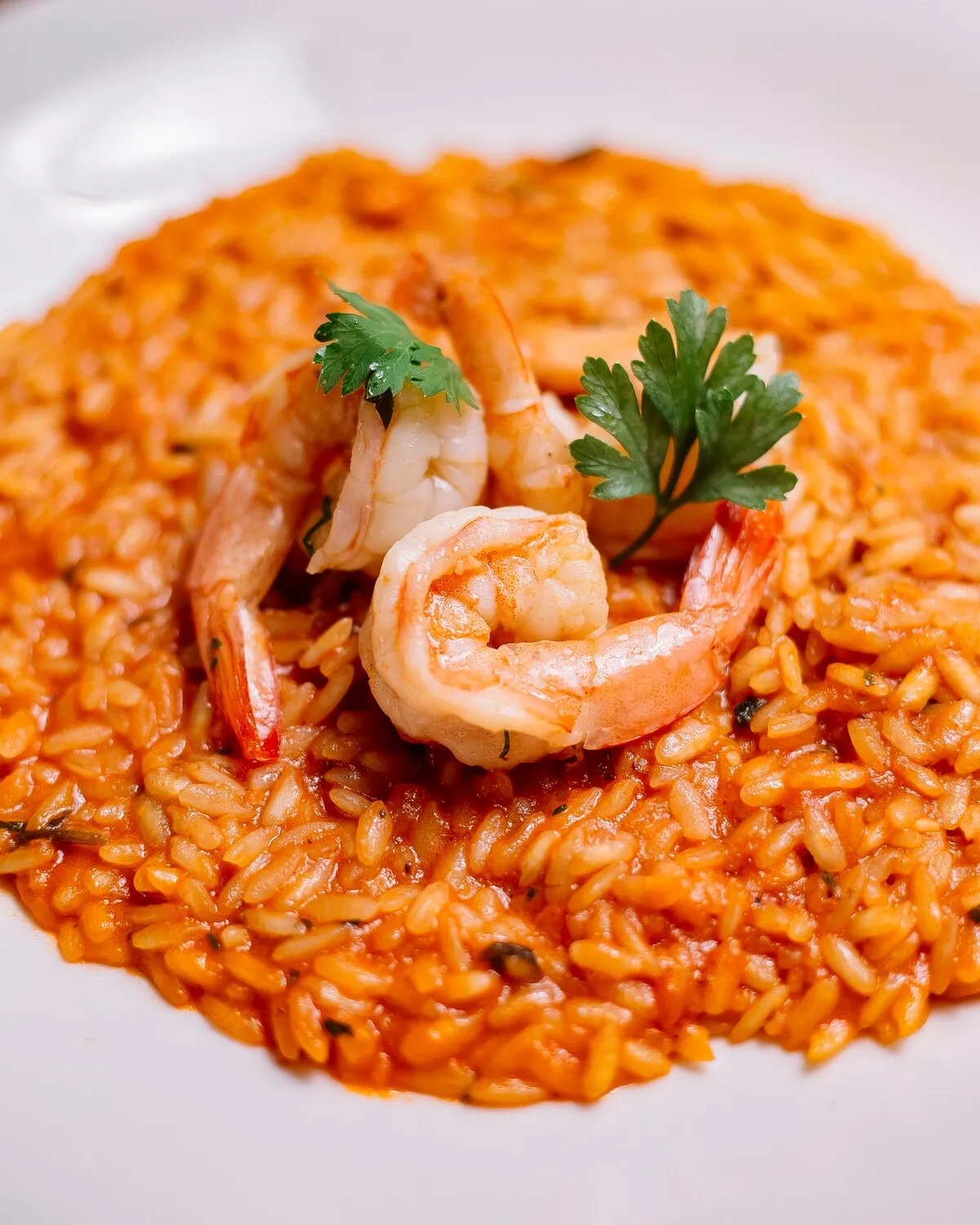
Risotto Ai Funghi
Arborio rice cooked with a selection of mushrooms, finished with parmesan and truffle oil.
Nutrition Facts
* The % Daily Value (DV) tells you how much a nutrient in a serving of food contributes to a daily diet. 2,000 calories a day is used for general nutrition advice.
Rice cultivation arrived in Italy during the Middle Ages, primarily in the fertile plains of the Po Valley. Risotto, as a dish, emerged much later, likely in the 19th century, combining the region's abundant rice production with local ingredients. The specific incorporation of mushrooms into risotto is a testament to Italy's diverse culinary landscape and access to various wild fungi.
Risotto is considered a staple in Northern Italian cuisine, embodying the region's culinary traditions of using simple, high-quality ingredients and emphasizing technique to create a comforting and flavorful dish. Risotto ai Funghi, in particular, highlights Italy's connection to nature and its diverse culinary heritage.
Regional Variations
Different regions of Italy use varying types of mushrooms depending on their availability, leading to distinct regional variations of Risotto ai Funghi. Some regions might use porcini, while others favor chanterelles or cremini mushrooms.
Comfort Food
Risotto is often considered comfort food in Italy, enjoyed during colder months or as a satisfying meal for special occasions.
Slow Food Movement
The preparation of risotto, requiring patience and attention to detail, aligns with the principles of the Slow Food movement, emphasizing the importance of savoring the process and appreciating the quality of ingredients.
Risotto ai Funghi is characterized by its earthy, savory, and umami-rich flavors, complemented by a creamy texture and subtle nutty notes.
The primary flavor component stems from the mushrooms, which provide a deep, earthy, and savory taste. Parmesan cheese contributes a salty, sharp, and umami-rich dimension, while the Arborio rice lends a creamy texture and subtle nutty flavor. Truffle oil, often added as a finishing touch, imparts a distinct musky and garlicky aroma and flavor, enhancing the overall richness.
Rice Quality
Arborio rice is crucial for its ability to absorb liquid while maintaining its shape, resulting in a creamy texture. Carnaroli rice is another excellent option, often preferred for its higher starch content and al dente texture.
Broth Temperature
Keep the broth simmering hot throughout the cooking process. Adding cold broth will lower the temperature of the rice and hinder the starch release, resulting in a less creamy risotto.
Stirring Technique
Stir the risotto frequently but not constantly. This encourages the rice to release its starch, creating the desired creamy consistency. Over-stirring can make the risotto gluey.
Adding Cheese
Incorporate grated Parmesan cheese at the end of cooking, stirring vigorously to emulsify it into the risotto. This adds richness and enhances the creamy texture.
Truffle Oil Usage
Use truffle oil sparingly as a finishing touch. A little goes a long way, and too much can overpower the other flavors.
Explore additional Risotto dishes and restaurants
Explore RisottoDiscover top dining spots and culinary experiences in Paisley.
Explore PaisleyLearn more about the food culture, restaurant scene, and culinary heritage of Scotland.
Explore Scotland
